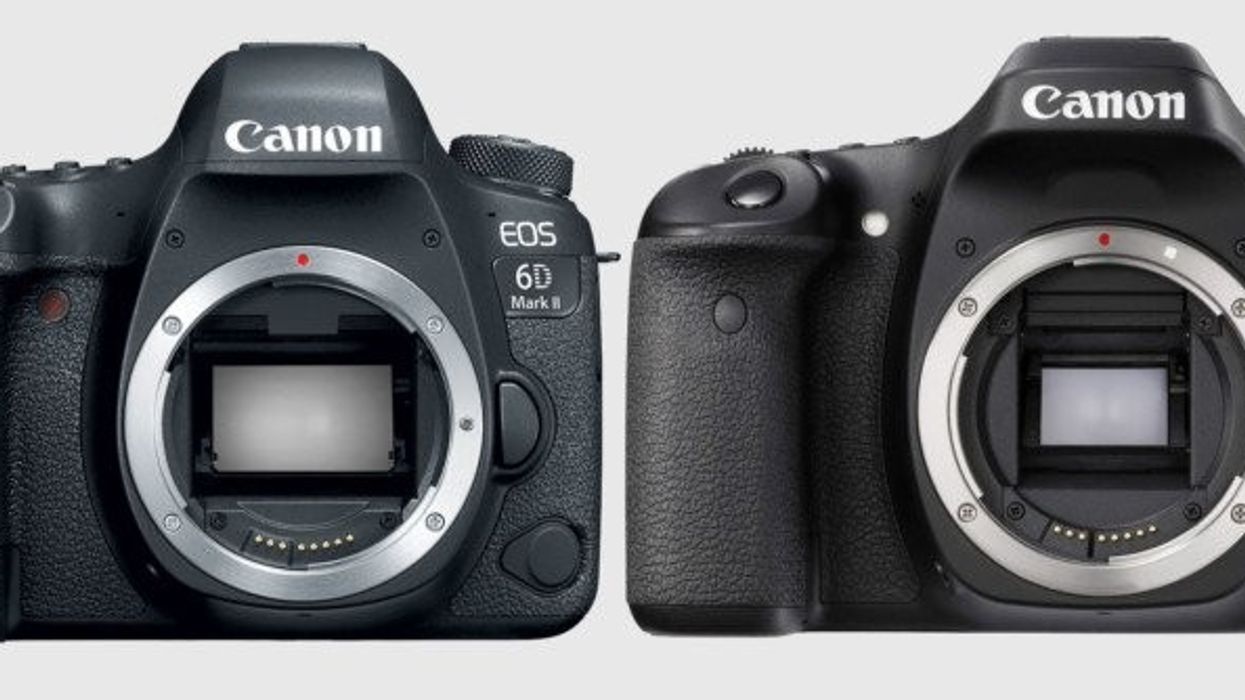More Bad News for Canon's 6D Mark II
Does Canon's new camera actually perform worse than the cheaper EOS 80D?

Canon released its 6D Mark II last month to a pretty unanimously disappointed group of DIY filmmakers. Many had hoped that Canon's popular, cost effective little brother to the 5D would have the ability to record in 4K. It does not.
4K is quickly becoming a necessary format for cinema cameras, so this is a significant spec for Canon to leave out if it is courting the filmmaker market at all. Others are quick to point out that the photography company has been distancing their line of DSLRs from film users, perhaps in an attempt to draw more buyers towards its true cinema line of C-series cameras. The 6D was clearly updated with the photographer and not the filmmaker in mind.
The big upgrades are a swivel screen, image stabilization, and dual pixel auto focus. As Charles Haine noted in an earlier piece, "Dual pixel, a technology that many love, hasn't come in such an affordable package before, which will excite photographers. However, filmmakers, who still tend to manually focus more often, aren't necessarily dying for the feature. The swivel screen is a nice addition, but it's also something that pretty much all the major competitors have already, and many, many filmmakers are attaching external monitors for a larger image and extreme articulation, so the feature isn't likely to be a strong draw."
More bad news came this week as Camera tester William J. Claff of Photons to Photos released his Dynamic Range vs ISO chart for the 6D Mark II. As you can see, in some cases, the camera actually seems to perform worse than the last model.
The dynamic range is almost identical to the original 6D, with the main difference seemingly lying in an improvement at higher ISOs, but with the consequence of a worse performance at lower ISOs. Perhaps, the most indicative reading from the graph is that the 6D Mark II somehow performs worse than the significantly cheaper 80D DSLR at lower ISOs. The full frame 6D Mark II has a retail price of $1,999 while the APS-C 80D goes for $1,099.
It appears that the camera's highly touted newly designed sensor is actually worse. DPReview wrote that “it seems the benefits that appeared in the sensors used in the EOS 80D and EOS 5D IV have not been applied to the latest EOS 6D II, and the new camera has less dynamic range than we’ve become used to,” adding that test shots from both cameras revealed the 80D footage, “shot with the same exposures look cleaner, when brightened to the same degree.”
This is a major step backward for Canon's DSLRs, regardless of whether or not you're using it for video. As you can see in the second chart above, the current number one digital camera manufacturer on the market now faces some stiff competition from the likes of Sony and FujiFilm—especially for filmmakers—and it looks like the 6D won't do much in the ways of keeping them at the top.
Source: PetaPixel















